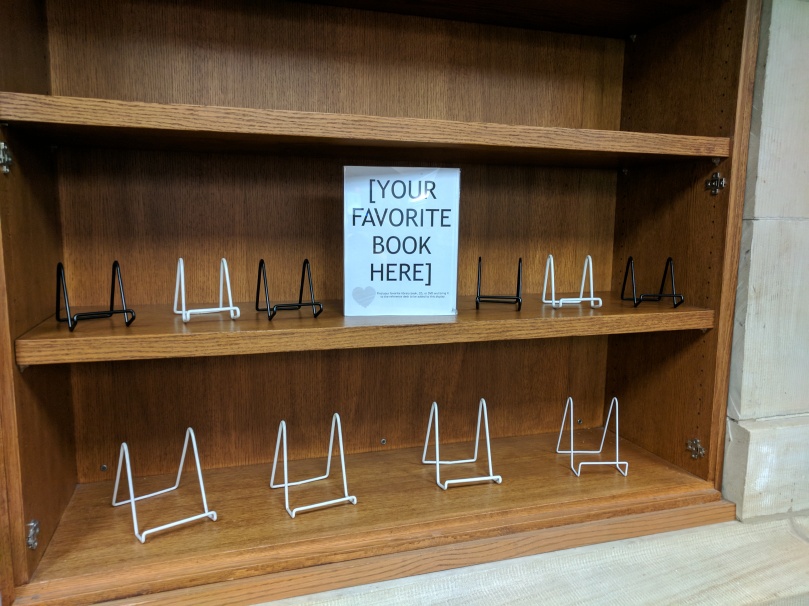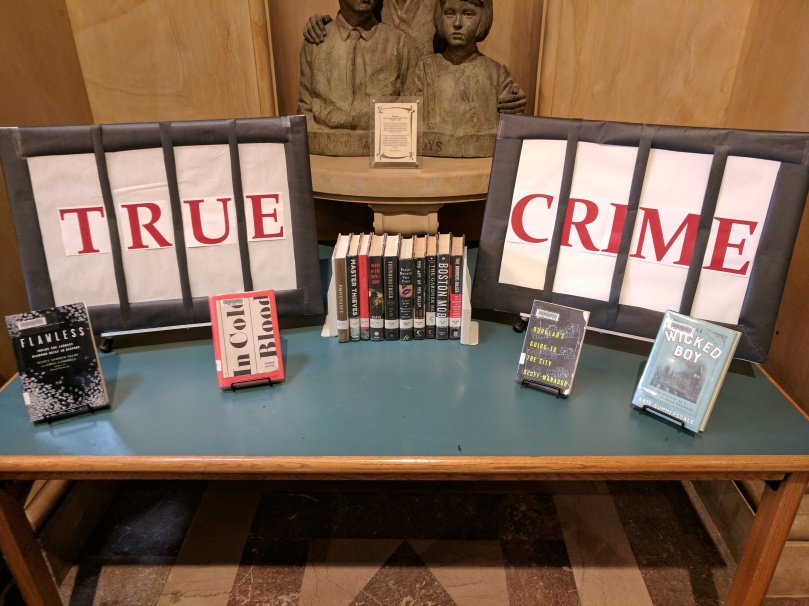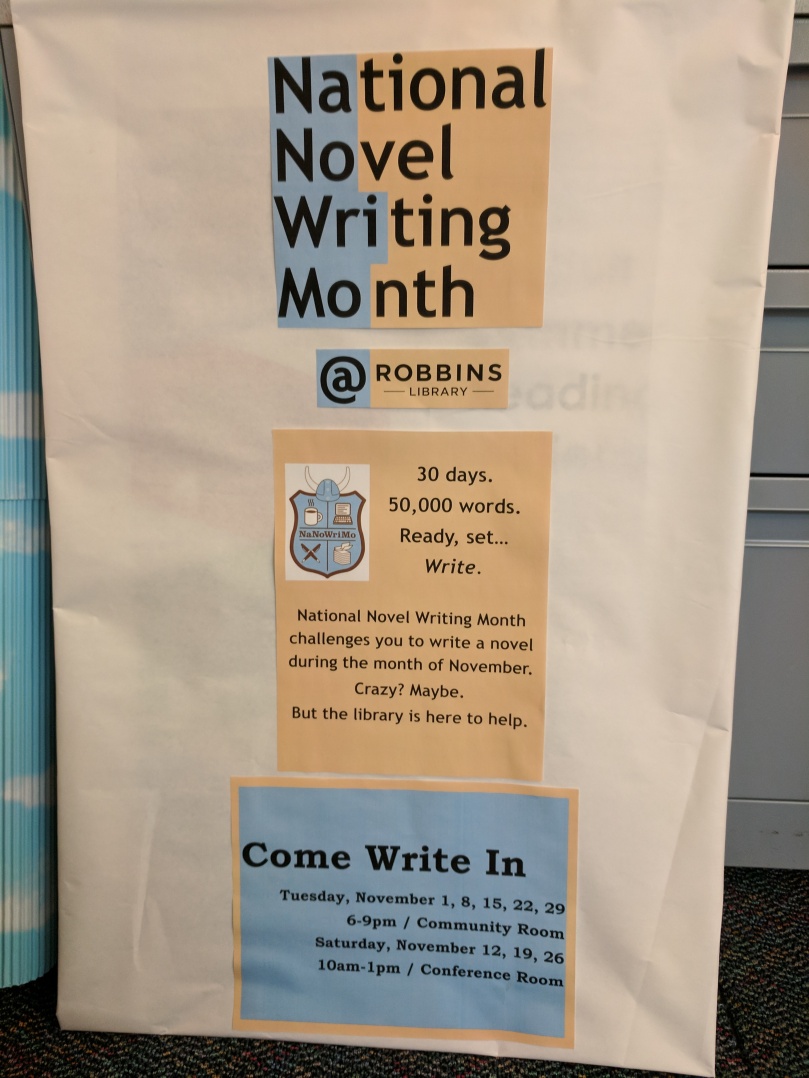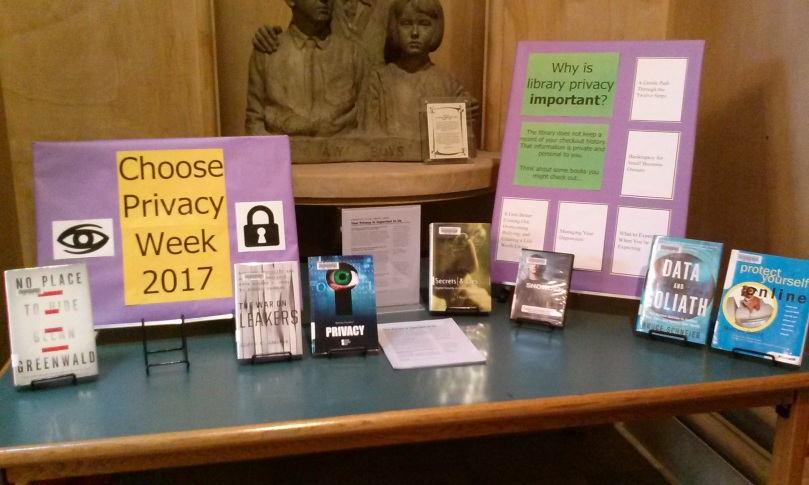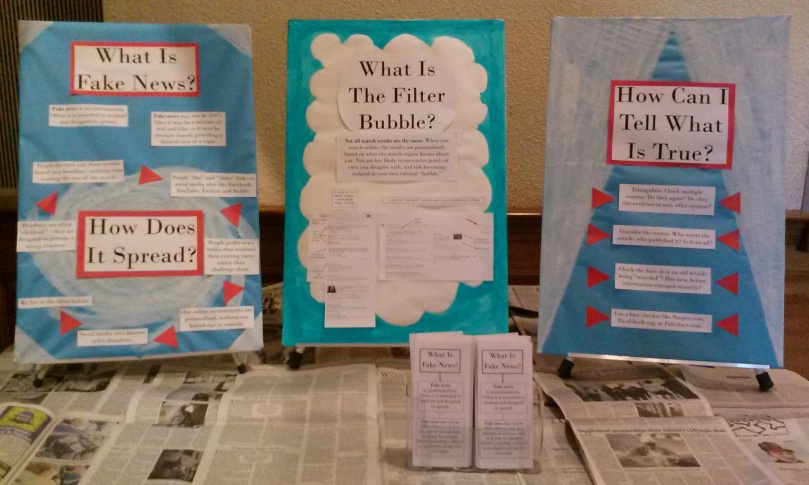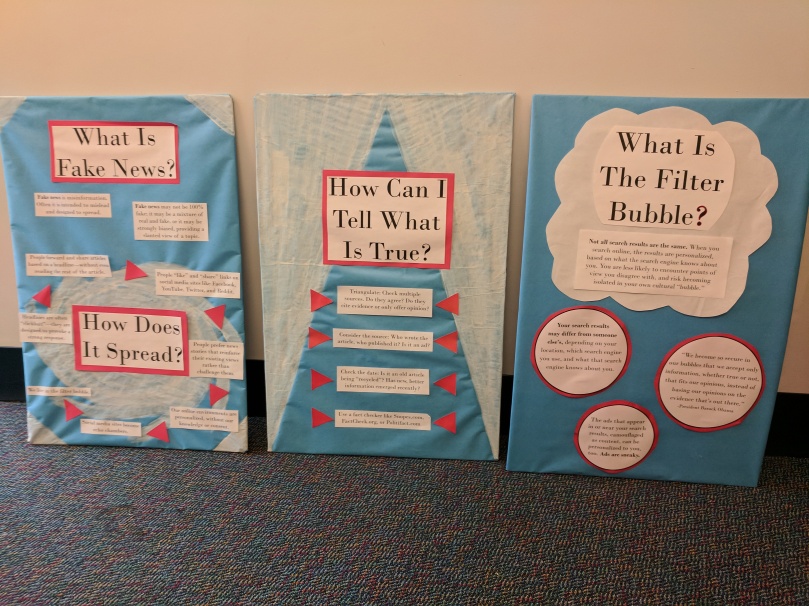
What do librarians do all day?
The scope of library jobs has expanded over the years. In many places, “reference librarians” are now called “adult services” or “information services” librarians to reflect the additional tasks and responsibilities we’ve taken on. Reference services are still a core part of the job, as is collection management (someone has to buy new books…and get rid of old ones). We plan programs, too, and of course, there are always “other duties as assigned.”
At the reference desk: Now that we have the Internet, what kinds of questions do librarians answer?
We still answer the occasional “ready reference” or simple question about a fact (spelling, grammar, geography, phone number lookup). We answer questions about library services: our hours, where the restrooms are located, how to reserve a museum pass or study room, where to find books/music/movies. We answer LOTS of tech questions and do a lot of troubleshooting: we help people use library apps like OverDrive, we help them print and make copies, we help them scan, we help them check out laptops and use library software, we show them library databases.
We answer questions about books and recommend books based on reader’s preferences (those are my favorite questions!). We help people navigate the internet to find information they need, whether it’s looking for an apartment on Craigslist, looking for love on a dating website, or applying for a job online. We help people in languages other than English. We help people doing research for school projects and college classes, and help people make Inter-Library Loan (ILL) requests for books that are not in our library network. We answer local history questions and connect people with unique local history resources.
Collection development: Where do the books come from (and where do they go)?
“Collection management” or “collection development” is the library term for acquiring new materials and deaccessioning (a.k.a. weeding) others, to maintain a collection that is current and interesting to our users. There is more collection development work now than there used to be, because there are more formats – not just fiction and nonfiction books, and magazines and newspapers, but paperbacks, foreign language materials, large print books, graphic novels and manga, audiobooks on CD and Playaway, digital content (e-books and digital audiobooks), movies and documentaries on DVD, music on CD, electronic databases, streaming services, video games, and more.
Library users may not think about where library materials come from, but someone has to select every title in every format. It’s a bigger job than it used to be, and it takes a lot of time: time to read (or skim) reviews in at least one review source (though there are many – Kirkus, Booklist, Publishers Weekly, Library Journal, School Library Journal, to name a few, and VOYA and The Horn Book for teens and children’s books), time to make lists and order the materials, time to keep track of spending so you’re neither under- nor over-budget by the end of the fiscal year.
Making things happen: What’s involved in planning a program?
You may well ask! “Program” is a bland word. A library program can be almost anything: a book group (and we have five of these, three of which are run by librarians, one of which – mine! – is a cookbook club that does a potluck), a lecture or author talk, a crafting project, a music concert, a film screening, a theater performance, a dance lesson, a tech petting zoo. We have offered computer classes, drop-in tech help sessions, resume and cover letter workshops, holiday card writing stations, game nights, and singalongs (not just for kids! Les Miserables and Pitch Perfect were very popular with adults).
For every program, there is a whole checklist of tasks to complete, in many different places (physical and digital):
- Reserve event space on the library’s internal calendar (Google calendar)
- Create the event on the library website calendar (WordPress)
- If there is an outside performer/presenter, set a date and time and agree on payment or travel costs (e-mail or phone)
- Add the event to our monthly press release (Google docs)
- Create a flyer to post in the library (Publisher or Canva)
- Make another version of the flyer to fit our digital sign (Publisher and Paint or Canva) and upload (Dropbox)
- Make additional promo materials (e.g. bookmarks or half- or quarter-sheet handouts)
- Write a blog post (WordPress)
- Promote on social media (Facebook and Twitter via Hootsuite)
- Set up event registration, if using, and send a reminder to participants (Eventbrite)
And that’s all before the day of the program itself. On that day, there is the time of the program itself, plus setup and cleanup, remembering to take a head count of attendees, and perhaps asking them to fill out a feedback form to help improve future programming.
The work of program planning, collection development, and creating displays largely takes place during our off-desk hours (the time that we are not at the reference desk), because, as they say, reports of our death have been greatly exaggerated; the library is busier than ever.
Other duties as assigned
Reference service, collection development, and program planning are three big chunks of the adult services librarian job. What else do we do? This varies from library to library. Here, we create displays (we have three display tables, and we create new displays every month, which means that our team of five full-time librarians creates thirty-six displays each year), write for the library blog, offer a variety of “readers’ advisory” services (from our staff picks shelf to our Goodreads account to handouts on specific topics or genres), contribute to the library’s social media accounts (Facebook and Twitter), attend monthly department meetings and other meetings for various committees and groups, and attend the occasional conference or other professional development activity. And of course, there are little tasks that take up time, such as refilling office supplies, cleaning up messes, watering the office plants, and anything else that arises.
So that’s what librarians do all day. Do you work in a library? What parts of your job do you think would surprise people?

